I Will Not Look After My Stepchild During a Romantic Getaway

They ruled the planet for over 170 million years... And then disappeared. History says it was a huge city-sized asteroid that came from space and hit the land of the Yucatán peninsula around 66 million years ago.
It caused terrible environmental changes, debris in the air blocking the sunlight, so the plants couldn’t survive. Temperatures on Earth’s surface plunged, animals were struggling to survive — until they finally went extinct.
At least, that’s something many paleontologists believe happened. Now they found out dinosaurs were about to go extinct even before the asteroid. Their diversity started to go down 10 million years before the asteroid — older long-living species didn’t evolve enough to adapt to all changes in the environment, such as higher sea levels, massive volcanic activity, cooler periods. Dinosaurs preferred a warm climate because it helped them to keep a stable body temperature.
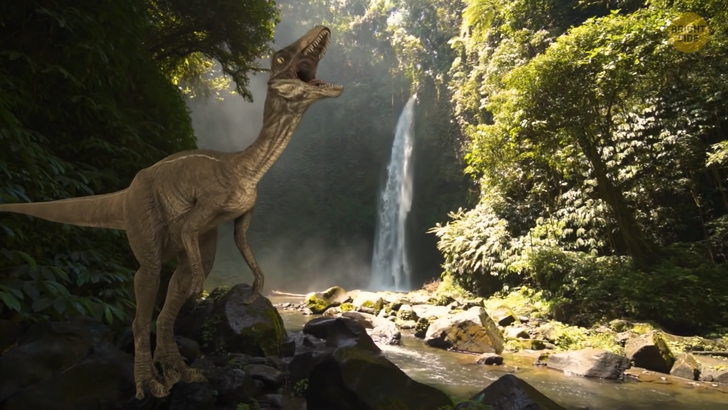
Dinosaurs lived on all 7 continents, even in Antarctica. That’s because it wasn’t all ice back then. Around 90 million years ago, Antarctica was a swampy rainforest with a warm, pleasant climate. It was even in a different location, only 560 miles from the then-South Pole.
That was the time of the warmest climate on our planet — the sea level was 560 feet higher than today, and the tropical sea surface could reach temperatures up to 95 F. Antarctica still had something like polar night — months without sunlight — but the climate around the South Pole was mild and temperate, with no ice masses. Dinosaurs didn’t shed their skin in one long piece like today’s reptiles do — scientists believe they shed it in small pieces, had something like “dinosaur” fur.
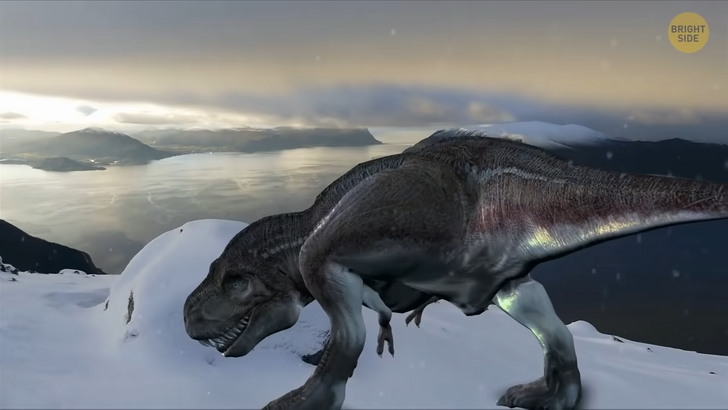
There was a dinosaur Pegomastax that looked like a cross between a porcupine and a parrot; it had 1-inch long jaws and ate plants. It had a short beak, and self-sharpening long teeth. They were like scissors this small dinosaur used to slice up plants.
Our modern lion has a mighty bite, but a big and scary T. Rex bites more than two times stronger. The king of the dinosaurs has the strongest bite amongst all land animals, 3.5 times stronger than today’s record holder, the Australian saltwater crocodile. It also had the longest teeth — almost 10 inches long, the length of an iPad.
Most modern animals are either warm-blooded or cold-blooded — dinosaurs were somewhere in between. Scientists think they mainly were mesotherms, which means the activity of their muscles would warm their bodies, but their body temperature could fluctuate too.
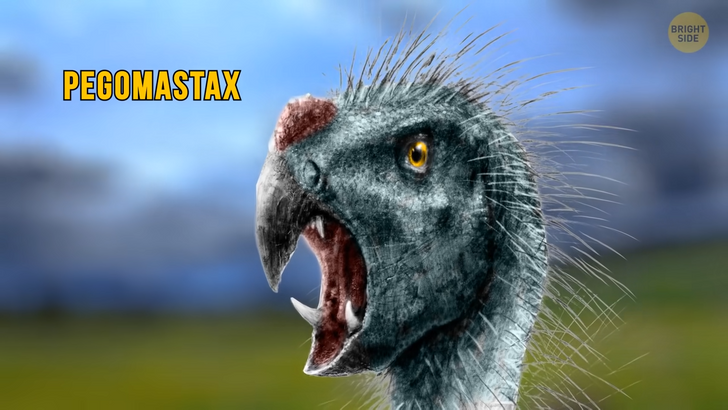
Many dinosaurs, such as Triceratops and Stegosaurus, had spikes, plates, horns, crests, or other bizarre structures on their bodies. In the beginning, scientists thought that’s for things like defense — they had neither sharp teeth nor hooked claws on the toes to hunt. But soon, they expanded the theory — it was probably the way to impress their mates and identify members of their kind.
One species, namely Pachycephalosaurus, even had a funky bone hat on top of its head. Scary, tall as buildings, massive — that’s what we saw in movies, but dinosaurs mainly were human-sized or even smaller. Bigger bones were easier to be fossilized, so that’s why we mostly find gigantic species.
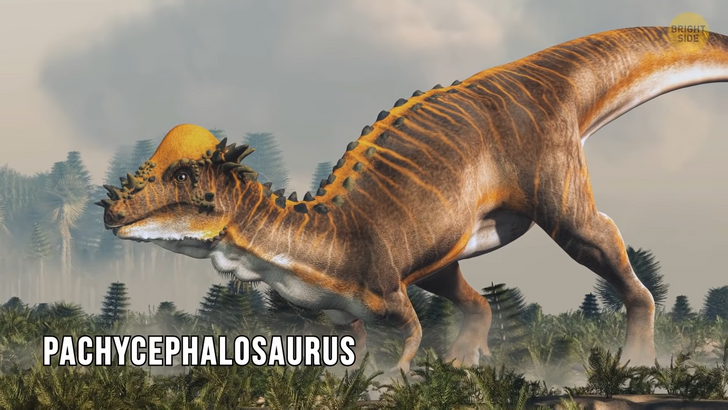
Eoraptor, or “dawn stealer,” was the first-named dinosaur. Small and toothy, (like me) it got its name because it comes from the dawn of the Dinosaur Age; the size of a German Shepard, but probably not that friendly. Arched back, sharp, bony plates, curved tail — Ankylosaurus were some sort of giant, muck spikier dinosaur version of an armadillo.
Its weak spot was the soft underbelly, but meat-eating dinos that were after this one had to flip that guy first to get there. Still, it was really tough because of their impressive gear — scientists believe they even had bony eyelids. Some dinos ate meat, others plants, and some of them could nibble even on pebbles. One dinosaur called Gallimimus couldn’t physically chew all those plants it ate, so it would ingest pebbles to mash up the food.
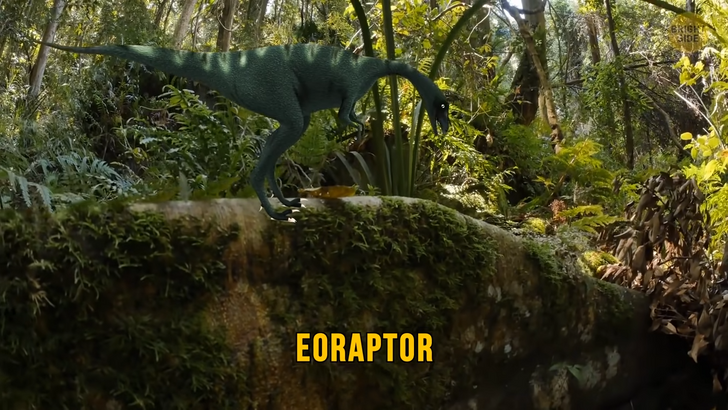
Gallimimus looked like some weird alien mix of dinosaur and bird. But, it couldn’t dribble a basketball because its wrists weren’t capable of keeping the palms parallel to the floor. And they had no 3-point shot. The largest dinos were plant-eaters.
Meat-eaters or so-called theropods were mostly smaller. One reason is that plant-eating dinosaurs were very greedy; they would devour enormous amounts of food, sometimes even swallowing the entire branches without chewing. Some of the biggest could eat a ton of food every day — like a bus-sized pile. There were also more plant-eating dinosaurs than the other ones.
Scientists are still not sure if meat-eating dinosaurs were able to coordinate themselves and hunt in groups — they were probably unfriendly towards each other, especially when it comes to sharing prey.
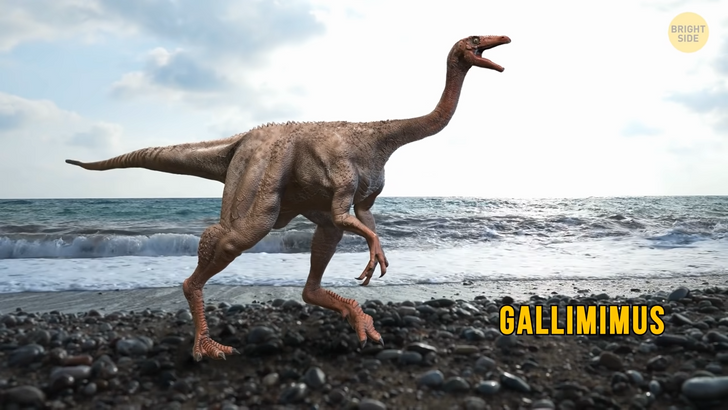
Fossils and the shape of delicate bones in the eye tell dinosaurs mostly roamed around during the day. Scientists think only smaller meat-eating dinos like Velociraptor were active during the night. They were after those small mammals snuffing around and trying to find food while big dinosaurs were asleep — or that’s what they thought.
Those small mammals were usually burrowing animals that survived both dinosaur reign and ice age hiding underground. Not all mammals were hiding from dinosaurs -some small but sneaky creatures, like Repenomamus, would steal the eggs from big dinosaurs — which was a big thing considering they had to trick the mama dinosaur first.
Researchers believe dinos tried to flap on the ground to get faster at running up inclined terrains to catch their prey. Such behavior caused them to learn how to fly — which of course, happened through thousands of years. Dinosaurs were fuzzy and fluffy. They are related to birds, but even those earlier dino species that didn’t fly had feathers — like gigantic, scary...Fuzzy T. Rex!
Movies lied — you just can’t stand still and expect a T. Rex would pass you by. Its vision was probably better than the one today’s raptors have. Even without it, they still had a pretty good sense of smell. Running could help it though, scientists calculated T. Rex could probably run at 12 mph — it would shatter its bones at a greater speed.
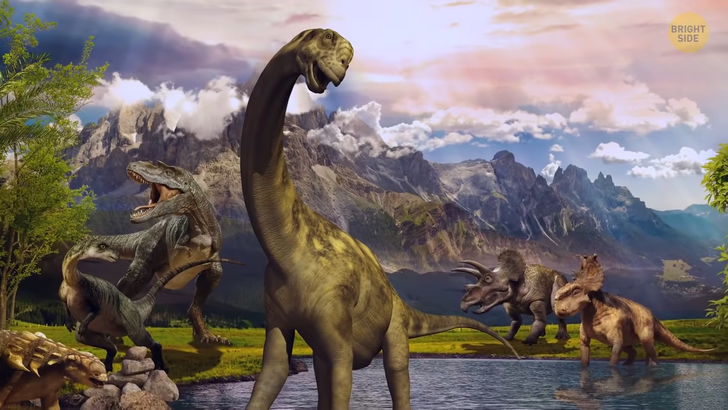
Some dinos had tails more than 45 feet long. Tails helped them to keep their balance when running, especially those that walked on two legs. Velociraptors were not like raptors we see on the screen, but more like some sort of prehistoric chickens; small — a little big bigger than a turkey, 2 feet in height — probably had feathers, hollow bones just like birds, mostly loners. But they were probably among the smartest dinos — their brain was big compared to their bodies.
They were as intelligent as today’s ostriches. The name “Velociraptor” means speedy thief. Stegosaurs had a pretty big body, spiky plates, and a tiny brain, the size of a walnut or lime. But, at least it had its own air conditioner — researchers found out its spikes were filled with veins that transferred blood and developed a theory they were cooling its giant body that way.
Dimorphodon was the flying reptile with a wingspan of 8 feet and multipurpose teeth — teeth in the upper jaw were longer, sharper, and better for catching food from the water. The teeth in the bottom jaw were better for holding the game in transit. One of the first potential dinosaur discoveries was in China, 3,500 years ago.
No one knew about dinosaurs then, so people thought teeth they found could belong to dragons. The Hadrosaurus was a duck-billed dino with more than 1,000 teeth — when they would fall off, it could grow new ones indefinitely. Dinosaurs’ eggs were pretty big, some as big as beachballs. Now, that’s an omelet.
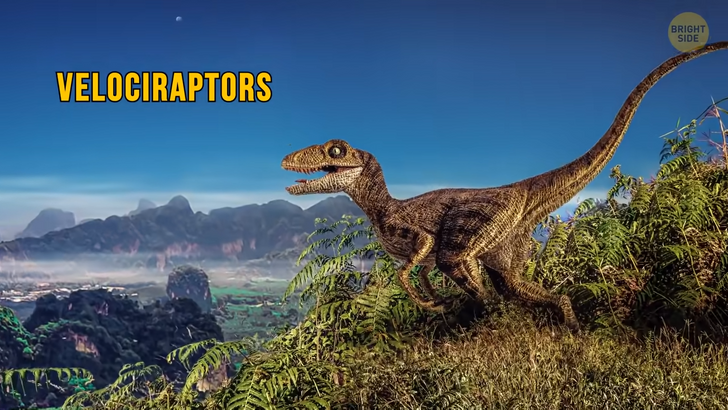
The Baryonyx was a big fan of the fish. Its name means “a heavy claw,” and it got it because of big, extended claws that were pretty sharp and made up the thumb of each hand. When catching fish, they used the claws like spears. Mosasaurs, also popular in movies, was not quite a dinosaur but a marine lizard, closely related to monitor lizards and snakes.
Like a snake, it had jaws that could expand when swallowing the food. These creatures were speedy; they had a tail fin and flipper-like paddles instead of arms and legs. Researchers believe they had a weak sense of smell and poor perception of depth, so they had to develop a unique hunting technique — waiting for their snack to come up to the surface for some air.











